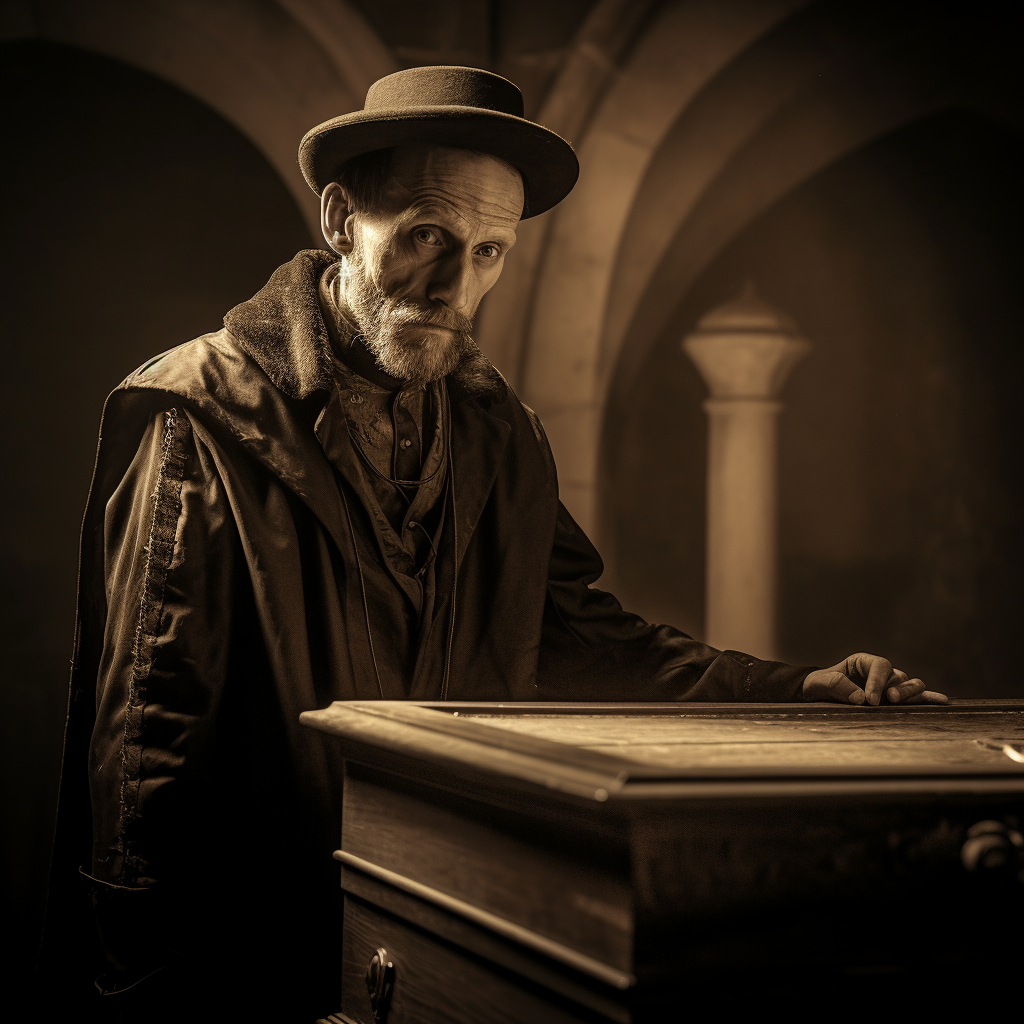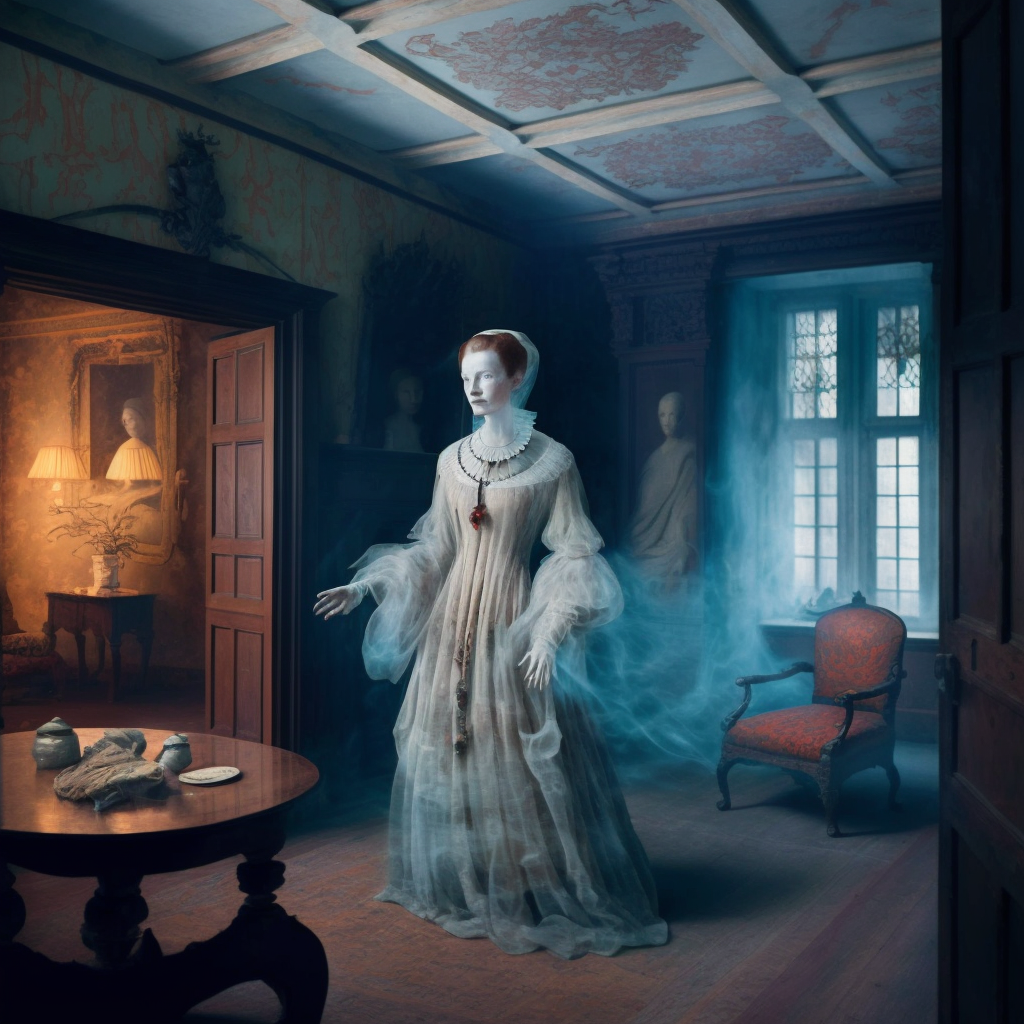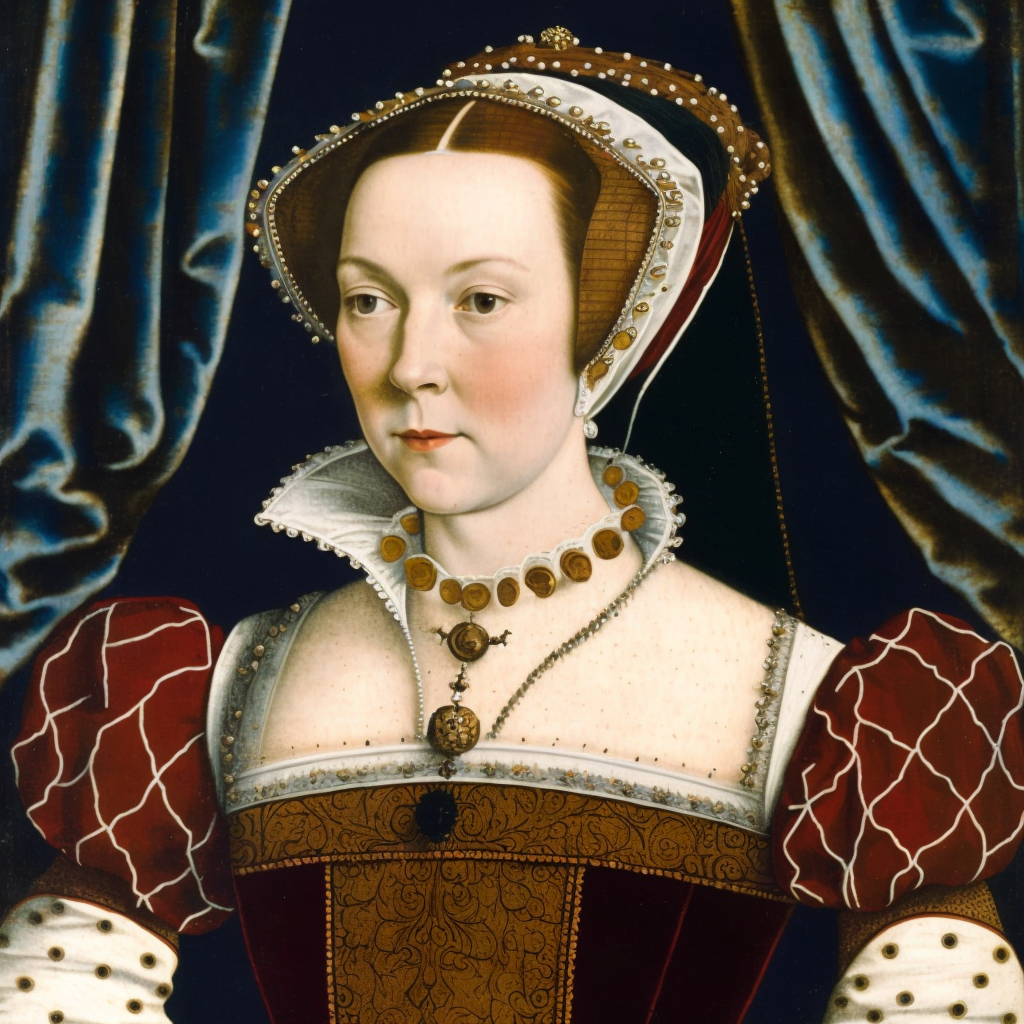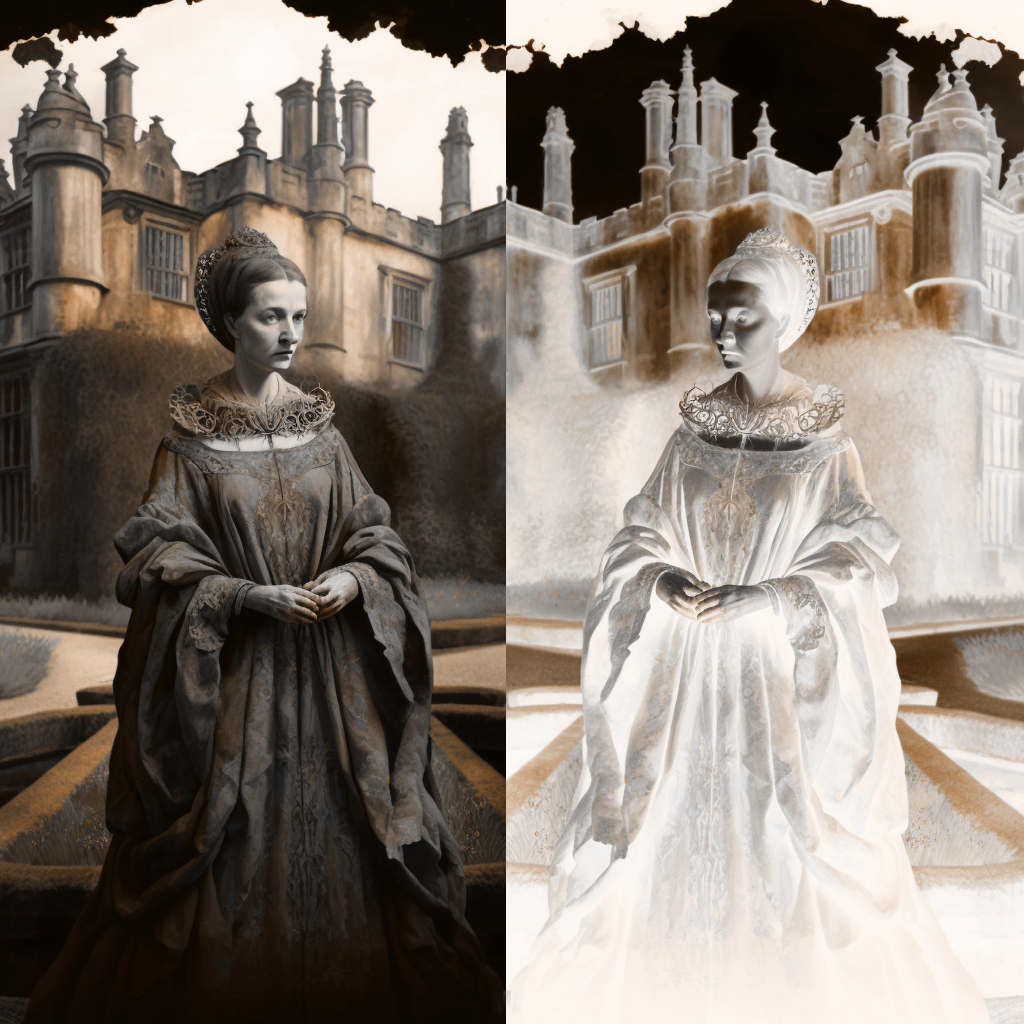
Ladies and gentlemen, if you’ll indulge me, I’d like to share with you a most peculiar tale—a tale of two ghosts, both bearing the name of Catherine Parr, haunting different corners of England. Their stories are steeped in history, love, and the inexplicable, and they offer a glimpse into the enigmatic world that exists beyond the veil.

The Shadows of Sudeley Castle
In the moonlight shadows of Sudeley Castle, we find the first specter, a forlorn figure, the Queen herself, Catherine Parr. The last of King Henry VIII’s six wives, she lies at eternal rest within the hallowed grounds of St. Mary’s Church, located on the castle’s premises. Her tragic tale began five days after giving birth, leaving her infant daughter in the cradle of life’s uncertainty. And so, they say, she roams the castle corridors, a restless spirit seeking the daughter she lost too soon.

Fred Simmons’ Encounter
One chilling account from 1860 recounts the encounter of a worker named Fred Simmons. He had been summoned to repair a broken blind by the castle’s chatelaine, Emma Dent. As he traversed the Chandos Room, his candle extinguished inexplicably, leaving him in darkness. The rustling of silk soon enveloped him as a woman rushed past, a ghostly presence he presumed to be Mrs. Dent. However, his inquiries revealed that no one else had been upstairs at the time. It was then that Fred Simmons confessed a dark secret—he had taken a tooth from Katherine Parr’s coffin. Could it be that the ghost of Catherine herself had sought vengeance upon those who dared disturb her eternal slumber?

Such is the somber and eerie existence of Catherine Parr’s spirit at Sudeley Castle, forever in search of her departed daughter, with her presence heralded by the faint scent of apple-scented perfume and the haunting cries of a phantom child.
The Happier Ghost of Snape Castle
But let us turn our gaze towards Snape Castle, where a different Catherine Parr roams—an apparition of a happier disposition. Catherine’s second husband, John Neville, 3rd Baron of Latymer, had made Snape Castle their principal residence during their marriage, and it is here that we find her “happy spirit.”
Two Castles, Two Ghost
The stark contrast between the two specters suggests that perhaps they embody two distinct periods in Catherine Parr’s life. In Snape Castle, she experienced marital bliss, and it’s likely that her joyous memories have left an indelible mark on the afterlife. Clad in a blue Tudor-style dress, her long fair hair flowing, she seems content and peaceful, far from the forlorn figure at Sudeley Castle.

Catherine Parr’s Posthumous Journey
The story of Catherine Parr’s posthumous journey is marred by indignities and misfortune. During the Civil War in the 17th century, her grave was forgotten and neglected, only to be accidentally discovered by a farmer in 1782. As the lead casket opened, her body appeared miraculously intact but crumbled into dust moments later, leaving the man terror-stricken. Katherine’s remains were eventually re-interred in the new chapel at Sudeley Castle in 1817, where she lies beneath a splendid Victorian effigy.
As for her daughter, Mary, she vanished from the annals of history, her fate forever shrouded in mystery.
One for Joy and One for Heartache
So, as we contemplate the two ghosts of Catherine Parr, we must wonder about the nature of love that transcends the boundaries of mortality. In life, Catherine experienced both joy and heartache, and it seems that even in death, her spirit reflects these emotions.
Sudeley Castle tells the story of a mother’s eternal longing for her child, her presence a haunting reminder of love lost too soon. Meanwhile, Snape Castle holds the memory of a happier time, where the queen reveled in the warmth of love and companionship.
Two ghosts, two different tales, yet bound by the enigma of Catherine Parr’s enduring love beyond the grave. In the depths of history and the darkness of these castles, their stories continue to be whispered through the corridors of time, leaving us to ponder the mysteries of life, death, and the unbreakable bonds of the human heart.

